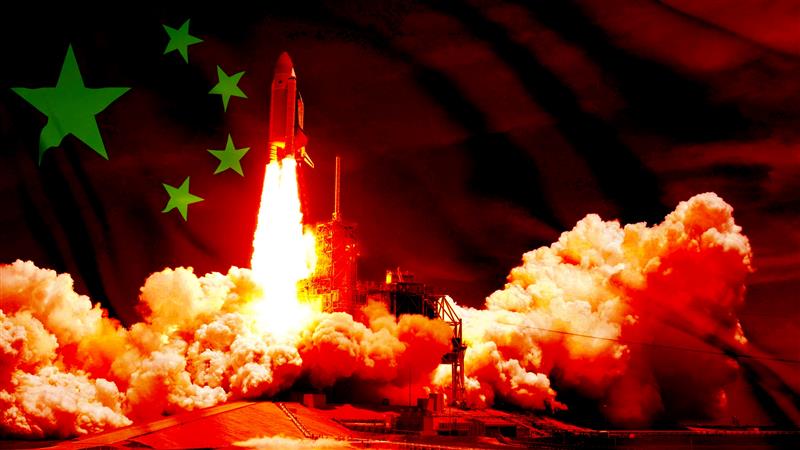
On Tuesday, China launched the Shenzhou-22 space rescue mission by sending an uncrewed spacecraft toward its Tiangong space station in an emergency operation to retrieve two of its stranded astronauts, also known as taikonauts.
Launched from the Jiuquan Satellite Launch Centre in Gobi Desert, the mission’s objective is the safe return of the crew, with a swift deployment of this complex rescue vessel.
On the global stage, Beijing is demonstrating its maturing capabilities in orbit and its rising influence in the space race, following its successful construction of its independent space station.
The launch follows engineers’ confirmation of the Shenzhou 20 capsule damage, leaving the current crew without a path back to Earth. State broadcaster CCTV showed the rocket leaving the desert base shortly after noon.
The takeoff was the planned Shenzhou 22 uncrewed launch, which China had originally intended to fly in 2026, but moved forward due to the emergency. The Long March 2F/G rocket, a vehicle China uses for all crewed and related missions to Tiangong, carried the spacecraft into orbit.
The earlier problem disrupted rotation plans and affected the stranded Shenzhou 21 crew, who had to return to Earth on a different spacecraft.
Officials stressed that the three astronauts currently aboard Tiangong are working normally, but they needed a backup ship to support a possible space station evacuation.
Mission planners say Shenzhou 22 will remain landed to Tiangong until the next launch window, supporting the broader China human spaceflight program that continues to expand.
Specialists said such incidents highlight the urgent need for an international space rescue service, with an increasing number of spacecrafts in low Earth orbit running into debris risks. Orbit footage reveals Shenzhou 22 closing in on Tiangong. Engineers confirmed the spacecraft will help prevent issues that can lead to the stranded astronauts rescue mission.
China says the new craft ensures that the crew always has a functioning vehicle ready, which is vital for any astronaut emergency return procedure that might be needed during their stay.
The damaged Shenzhou 20 capsule will remain in orbit for only a period of time before it makes room for the next modules of the space station to expand the laboratory capacity. Analysts say the mission also reflects China’s growing space influence as Beijing pushes for more international partnerships in orbit.
The three crew members, Zhang Lu, Wu Fei, and Zhang Hongzhang, finally have a secure route back home, inspiring them with confidence in their job and the technology supporting them on the space rescue mission. China says the station is continuing normal operations, and the new craft ensures the outpost remains safe while the country prepares for next space station modules tied to another planned mission in the coming years.
Washington Threatened by Beijing’s Space Ambitions
The development of the Tiangong program continues at a time when US officials warn that it risks losing moon race to China if investment in science and exploration slows. For Beijing, the arrival of Shenzhou 22 restores stability and prepares the astronauts for any emergency linked to a space rescue mission in orbit.
Beijing’s proliferated influence in the space race has been noticed by US lawmakers, including Senate members, deeming it an urgent catalyst for restructuring American space policies.
Lawmakers are now calling for the creation of new research institutes to maintain US competitiveness in the post-international Space Station (ISS) era.
Inside Telecom provides you with an extensive list of content covering all aspects of the tech industry. Keep an eye on our Tech sections to stay informed and up-to-date with our daily articles.